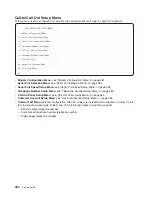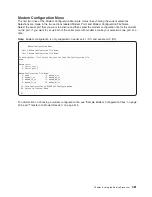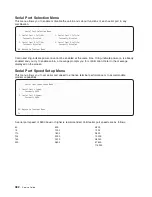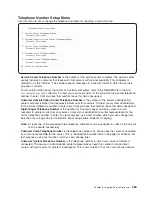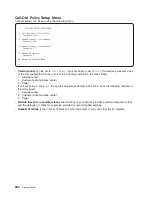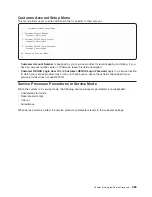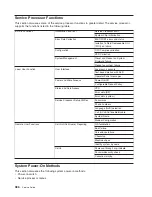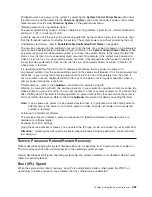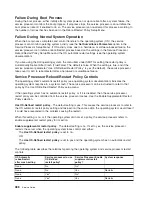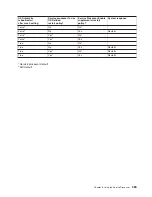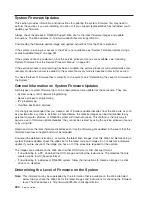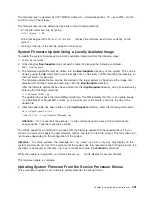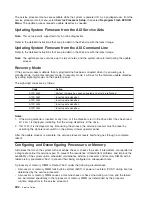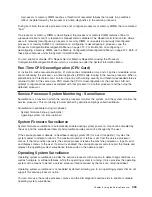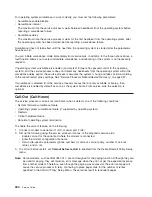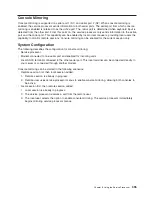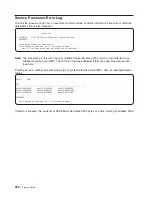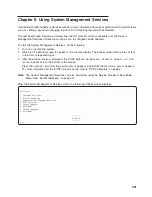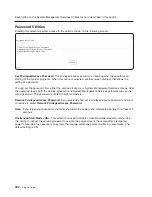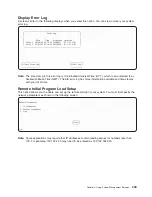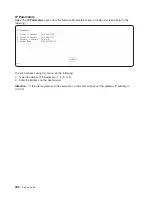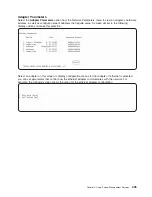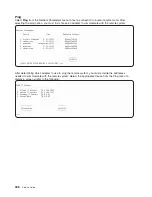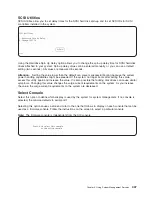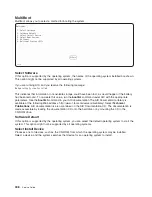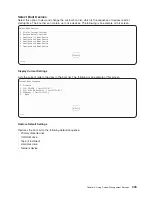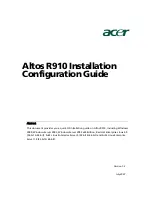
For
operating
system
surveillance
to
work
correctly,
you
must
set
the
following
parameters:
v
Surveillance
enable/disable
v
Surveillance
interval
The
maximum
time
the
service
processor
waits
between
heartbeats
from
the
operating
system
before
reporting
a
surveillance
failure.
v
Surveillance
delay
The
maximum
time
the
service
processor
waits
for
the
first
heartbeat
from
the
operating
system,
after
the
operating
system
has
been
started,
before
reporting
a
surveillance
failure.
Surveillance
does
not
take
effect
until
the
next
time
the
operating
system
is
started
after
the
parameters
have
been
set.
You
can
initiate
surveillance
mode
immediately
from
service
aids.
In
addition
to
the
three
options
above,
a
fourth
option
allows
you
to
select
immediate
surveillance,
and
rebooting
of
the
system
is
not
necessarily
required.
If
operating
system
surveillance
is
enabled
(and
system
firmware
has
passed
control
to
the
operating
system),
and
the
service
processor
does
not
detect
any
heartbeats
from
the
operating
system
within
the
surveillance
delay
period,
the
service
processor
assumes
the
system
is
hung
and
takes
action
according
to
the
reboot/restart
policy
settings.
See
“Service
Processor
Reboot/Restart
Recovery”
on
page
387.
If
surveillance
is
selected
from
the
service
processor
menus
that
are
only
available
at
bootup,
then
surveillance
is
enabled
by
default
as
soon
as
the
system
boots.
From
service
aids,
the
selection
is
optional.
Call-Out
(Call-Home)
The
service
processor
can
call
out
(call-home)
when
it
detects
one
of
the
following
conditions:
v
System
firmware
surveillance
failure
v
Operating
system
surveillance
failure
(if
supported
by
operating
system)
v
Restarts
v
Critical
hardware
failure
v
Abnormal
operating
system
termination
To
enable
the
call-out
feature,
do
the
following:
1.
Connect
a
modem
to
serial
port
1
(S1)
or
serial
port
2
(S2).
2.
Set
up
the
following
using
the
service
processor
menus
or
the
diagnostic
service
aids:
v
Enable
call-out
for
the
serial
port
where
the
modem
is
connected.
v
Enter
the
modem
configuration
file
name.
v
Set
up
site-specific
parameters
(phone
numbers
for
call-out,
call-out
policy,
number
of
call-out
retries,
and
so
on).
3.
To
call
out
before
restart,
set
Call-out
before
restart
to
enabled
from
the
Reboot/Restart
Policy
Setup
menu.
Note:
Some
modems,
such
as
IBM
7857-017,
are
not
designed
for
the
paging
function.
Although
they
can
be
used
for
paging,
they
will
return
an
error
message
when
they
do
not
get
the
expected
response
from
another
modem.
Therefore,
even
though
the
paging
was
successful,
the
error
message
will
cause
the
service
processor
to
retry,
continuing
to
place
pager
calls
for
the
number
of
retries
specified
in
the
Call-Out
Policy
Setup
Menu.
These
retries
result
in
redundant
pages.
394
Service
Guide
Summary of Contents for RS/6000 Enterprise Server M80
Page 1: ...RS 6000 Enterprise Server Model M80 Eserver pSeries 660 Model 6M1 Service Guide SA38 0571 01...
Page 10: ...x Service Guide...
Page 14: ...xiv Service Guide...
Page 16: ...xvi Service Guide...
Page 22: ...Data Flow 4 Service Guide...
Page 30: ...CEC Card Cage Rear of CEC drawer viewed from top cover removed 12 Service Guide...
Page 84: ...66 Service Guide...
Page 176: ...158 Service Guide...
Page 376: ...358 Service Guide...
Page 430: ...412 Service Guide...
Page 485: ...Chapter 11 Parts Information This chapter contains parts information for the system 467...
Page 486: ...CEC Drawer Card Assembly 9 468 Service Guide...
Page 488: ...CEC Drawer Backplane 5 2a 1 2 3 4 470 Service Guide...
Page 490: ...CEC Drawer Power Supplies 1 2 3 4 5 6 7 8 9 472 Service Guide...
Page 492: ...CEC Drawer Fan Assemblies 2 1 3 4 5 6 8 9 10 11 12 13 7 14 474 Service Guide...
Page 496: ...7 8 9 10 6 1 2 3 4 4 5 478 Service Guide...
Page 508: ...490 Service Guide...
Page 520: ...502 Service Guide...
Page 522: ...504 Service Guide...
Page 526: ...508 Service Guide...
Page 558: ...540 Service Guide...
Page 565: ......

